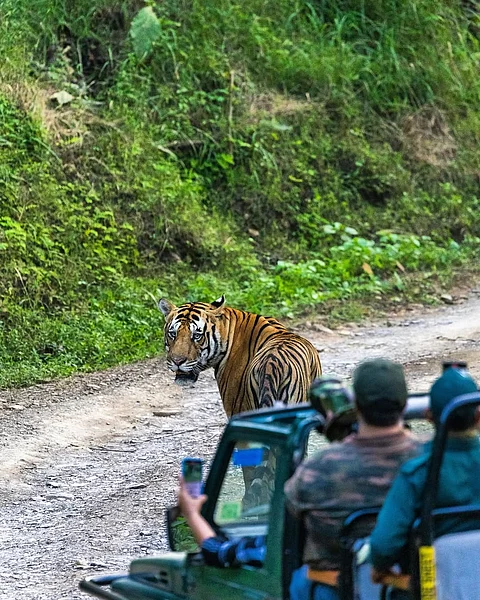
- Destinations
- Experiences
- Stay
- What's new
- Celebrating People
- Responsible Tourism
- CampaignsCampaigns
- Subscribe
- Buy Now

Panna was declared a Project Tiger Reserve in 1994. After local extinction in 2009, a successful tiger reintroduction programme made it one of India's remarkable conservation revival stories.
Panna hosts over 200 bird species, 35 mammal species, and 10 types of reptiles, including leopards, sloth bears, gharials, and chinkaras, making it a diverse wildlife habitat.
The Ken River runs through the park, creating gorges and providing water to sustain flora and fauna. It supports aquatic life and adds scenic and ecological significance to the reserve.
The Ken Gharial Sanctuary, located within the park, protects the critically endangered gharial crocodile, offering rare sightings of these fish-eating reptiles in their natural riverine environment.
Panna is designated an Important Bird Area (IBA). Species such as the Indian vulture, bar-headed goose, and paradise flycatcher attract birdwatchers year-round, especially during migration seasons.
Panna offers night safaris in buffer zones, providing opportunities to observe nocturnal animals like hyenas, civets, and porcupines, which are rarely visible during regular day safaris.
The region around Panna is home to Gond and Baiga communities. Cultural tours allow visitors to learn about traditional knowledge systems and indigenous approaches to wildlife and forest conservation.
Located just 25 kilometres from the UNESCO-listed Khajuraho temples, Panna can be easily combined with cultural tourism, offering both natural and architectural heritage in one itinerary.
Panna’s terrain includes plateaus, valleys, grasslands, and teak forests. This variety supports a wide range of species and enhances the experience of tracking animals across distinct ecosystems.
Compared to popular tiger reserves like Bandhavgarh or Kanha, Panna has fewer tourists, offering a quieter wildlife experience with increased chances of sightings without vehicle congestion.
